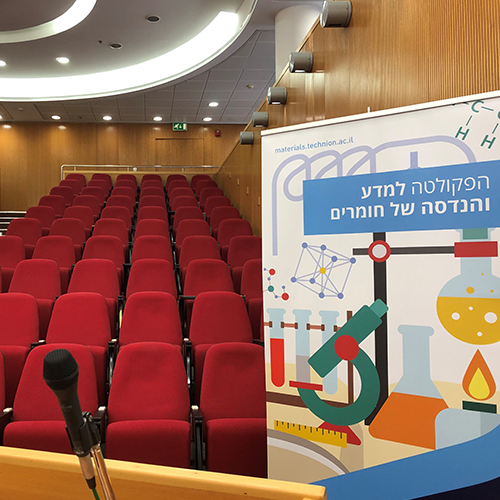
Mr. Guy Feldus – M.Sc. Candidate
07/09/2025
David Wang Auditorium, 3rd Floor, Dalia Maydan Bldg.
13:30
Thermoelectric (TE) technology offers a reliable, environmentally friendly, solid-state solution for converting waste heat into electricity. Antimony telluride (Sb2Te3)-based compounds are recognized as some of the best TE materials near room temperature. As opposed to efforts invested in recent decades to enhance their performance via chemical doping, the current study focuses on systematic manipulation of their microstructure and defects via top-down processing. Herein, we prepare Sb2Te3 powders from cast ingots by hand-grinding (HG) or ball milling (BM) for various durations prior to hot-pressing into bulk pellets, providing control of grain size and texture, as well as grain boundary misorientation. These features were characterized using electron microscopy and X-ray diffraction, and correlated with the materials’ TE transport properties. We find that the HG pellets exhibit initially strong {000l} surface texture, which systematically declines upon increasing BM time. The charge carrier mobility is directly governed by this texture, exhibiting the highest values for the highly-textured HG sample. BM alters the grain boundary misorientation distribution, so that longer milling durations lead to increased misorientation angles, grain refinement and emergence of twin boundaries. These features collectively suppress thermal conductivity via enhanced phonon scattering. Interestingly, the HG sample exhibits the lowest lattice thermal conductivity despite its large grain size, with values as low as ca. 0.4 W/mK at room temperature, compared to 1.4 W/mK measured for its as-cast counterpart. This is attributed to the strong alignment of the {000l} basal planes parallel to the pellets’ surface. Our study shows that microstructural engineering enables decoupling between electronic and thermal transport properties, offering a direct route to improve TE conversion efficiency, resulting in enhancement of the TE figure of merit from 0.4 to 0.85 at 300 °C.


